Jane visits life in Ngorongoro Crater, Tanzania
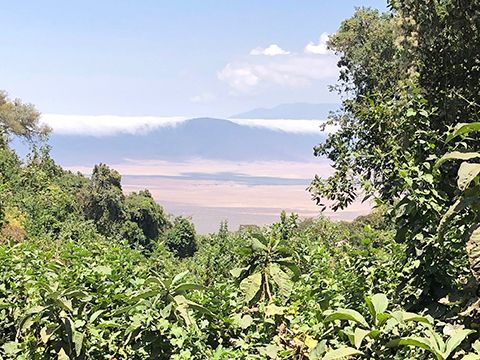
Up early to leave Arusha for my flight to Manyara. Checkin at the airport just a simple shack and the departure lounge a touch laid back. The aircraft are getting smaller, a 10-seater single engine this time which gave us a good view over Lake Manyara.
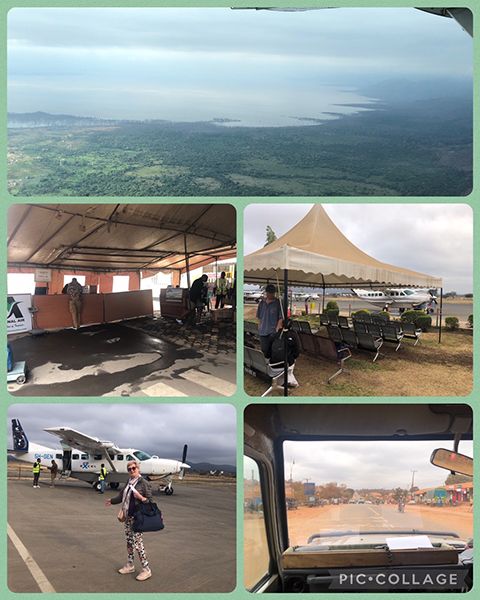
Only a 1/2hr flight followed by a 2 hour drive to the lodge, stopping briefly at the entrance to the Ngorongoro Conservation Park, the locals keen to join in for my photos.
The Ngorongoro Crater was formed when a giant volcano exploded and collapsed around 3 million years ago. The cone of the volcanic caldera collapsed inwards creating a valley and one of the most unique safari parks in Africa.
Bitumen soon gave way to a dirt road, the crater remained a mystery shrouded in cloud for most of the time. Suddenly a burst of sunshine and a view of the vast caldera below - breathtaking as you can see for the opening image.
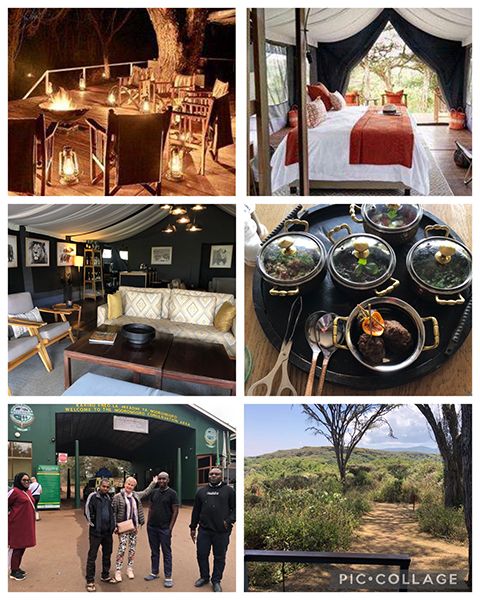
The camp is nestled in the African bush, just 10 guest tents with all the creature comforts - good shower, flushing toilet, huge king size bed. It’s freezing in the early mornings and evenings, but the gas heater makes it cozy and there is even the luxury of an electric blanket. I’m told no wandering about the camp especially at night, as we are in the wilds here, so before dinner I use the flashlight to alert Joseph to escort me. He also shows me how to use the walkie-talkie in case of an emergency.
I’d forgotten the complete silence of the African bush at night. Thankfully no elephants passed through although on the second night I woke to the tent shaking - not an earth tremor, just zebras grazing in comparative safety.
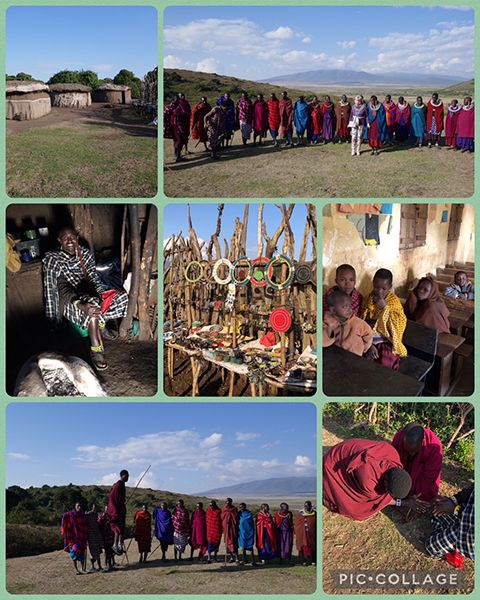
I spent some time visiting a Maasai village. The Maasai are the only people allowed to live within the boundary of the crater, grazing their cattle which is their main source of income, although now they take a hefty fee from visiting tourists as well. The family welcomed me with a traditional dance in which I took part, met some of their children, saw their spear throwing and jumping talents. They live in mud bomas, which are very small - tiny windows so the heat doesn’t escape, a place to sleep with a fire in the centre. The women make beaded items which are also a source of income. Marriages are arranged by the family elders and men can have quite a number of wives. Each boma is home to one wife and her children. The kids are shepherded off to another wife when the husband is in residence.
But I’m here to see the masses of animals in the Ngorongoro crater, where I spent a whole day. Joshua is my personal guide and driver, a delightful man with a wealth of information and a friendly nature.
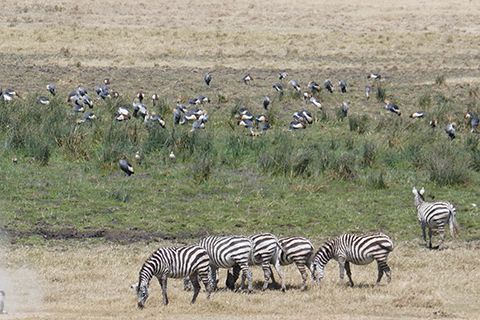
We set off at 6:30am as mornings are the best time. Photos can’t capture the incredible number of animals grazing as we crisscrossed the crater floor - fording small rivers, traversing the vast plains and various lakes.
Wildebeest while away the day, buffalo block our path, zebra zig zag their way along set routes, all in groups of 50-200, with Thompson gazelle dotted all over. Lions laze about, the odd warthog, ostrich, bloats of hippos, the list goes on.
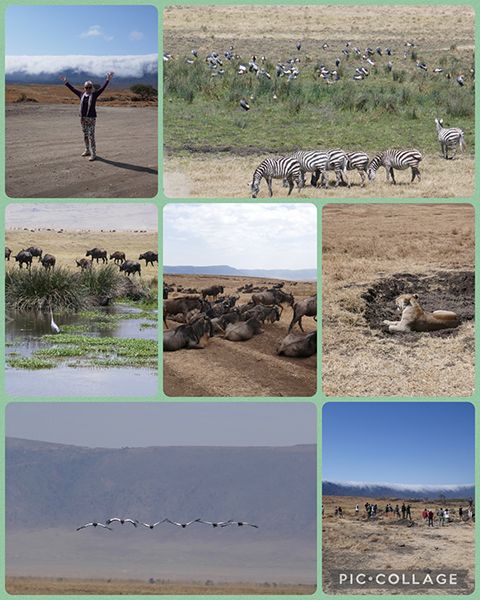
Flamingoes seem to float, cranes command the sky. We spotted at least 20 different types of birds, darting overhead, flitting through the bushes and grasses or along the ground. My little LUMIX camera wasn’t a match to some of the giant zoom lens I saw others use, however I did manage some good photos.
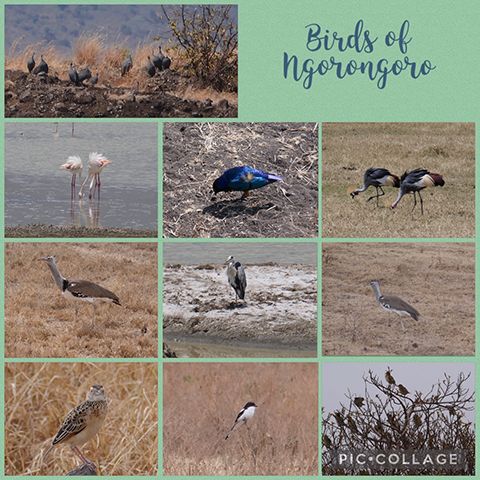
The animals don’t need to migrate here, as it’s a garden of eden for them. We covered around 120kms over the 7 hour bumpy and dusty drive. We stopped constantly to behold the tranquil scenes of the many animals going about their daily lives, which have remained unchanged for thousands of years.
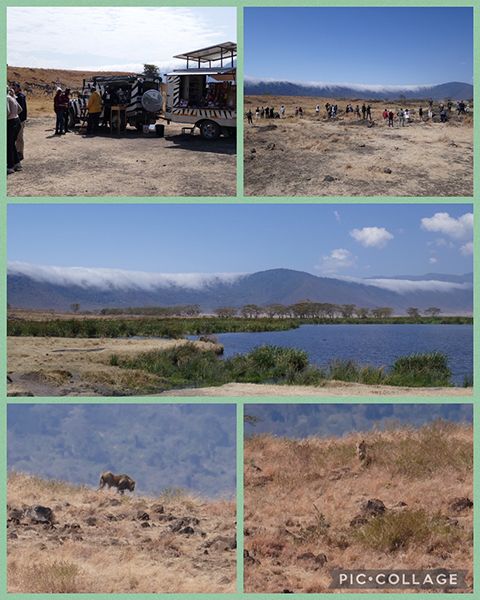
We watched a serval cat stork it’s prey, successfully catching a mouse. At the morning tea stop I was surprised to see a mobile van fully kitted out with a cappuccino machine! It’s located by a lush lake, where we spotted a pride of lions eyeing of a small dazzle of zebras. One lion was slowly scoping out the herd, while the others gained good vantage points. We held our breath - would we see a kill? Well the main lioness suddenly leapt into action, zebras running for their lives, however the lions sisters had obviously decided it was a vain hope and didn’t join in the chase. The zebras can live another day and the lions would try again perhaps at dusk.
It’s rare to actually witness a kill, but along with the crowd we were well satisfied with nature taking its course. We were in awe as the scene unfolded so close to the “Zebra Cafe”. Nature must take its course and it’s the survival of the fittest - we spotted a young dead wildebeest - sad yet this will be tasty meal for the hyenas and other scavengers.
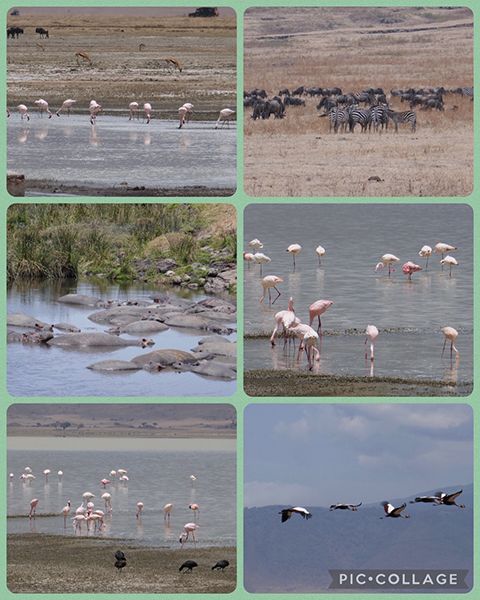
It was a dream to see flamingoes and although not as many as I expected, still a wonderful sight. They filter the water through their odd looking beaks absorbing the nutrient rich algae found in soda lakes, which gives them their pink tinge.
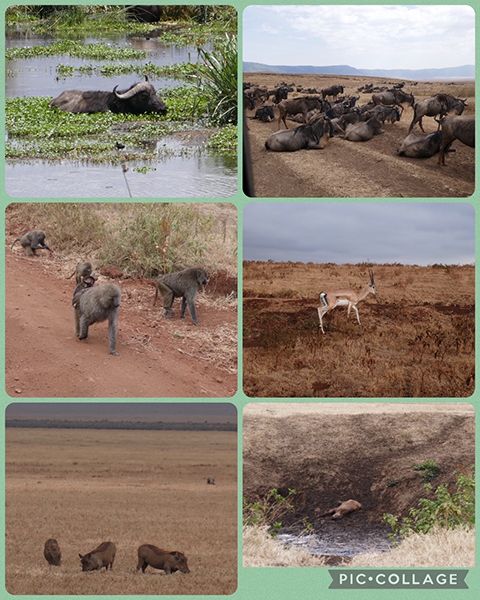
A very long day but such a rewarding one - the images of the sheer volume of wildlife will stay with me for ever. It’s another early start tomorrow returning to Manyara and flying to the vast plains of the Serengeti.
Stayed tuned for the next chapter in one of the most exciting adventures of my life which I am so happy to be able to share with you. Anne has told me how excited our Tanzanian subscriber Monica is to see her stunningly beautiful country being showcased on the blog.
